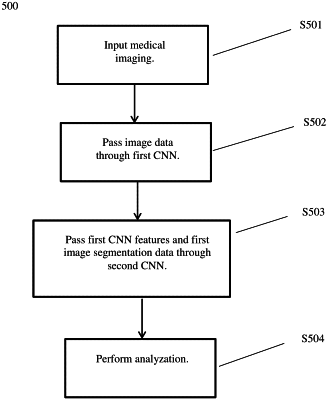| CPC G06T 7/0012 (2013.01) [G06F 18/24 (2023.01); G06N 3/045 (2023.01); G06T 7/11 (2017.01); G06T 19/006 (2013.01); G06V 10/764 (2022.01); G06V 10/806 (2022.01); G06V 10/82 (2022.01); G06V 20/695 (2022.01); G06V 20/698 (2022.01); G06T 2207/10056 (2013.01); G06T 2207/20081 (2013.01); G06T 2207/20084 (2013.01); G06T 2207/30024 (2013.01)] | 20 Claims |

|
1. A method for detecting tissue lesions, the method comprising:
receiving image data from a user interface, the image data including raw image data, passing the image data through at least one first convoluted neural network to compute low order features,
passing the low order features through at least one second convoluted neural network to compute a course segmentation that is smaller than the raw image data,
recovering a spatial resolution of the course segmentation by copying and concatenating the low order features into at least one third convoluted neural network to generate and compute an initial segmentation,
concatenating and weighting data related to the initial segmentation and generating second image segmentation data, and
analyzing the second image segmentation data thereby detecting tissue lesions if present.
|